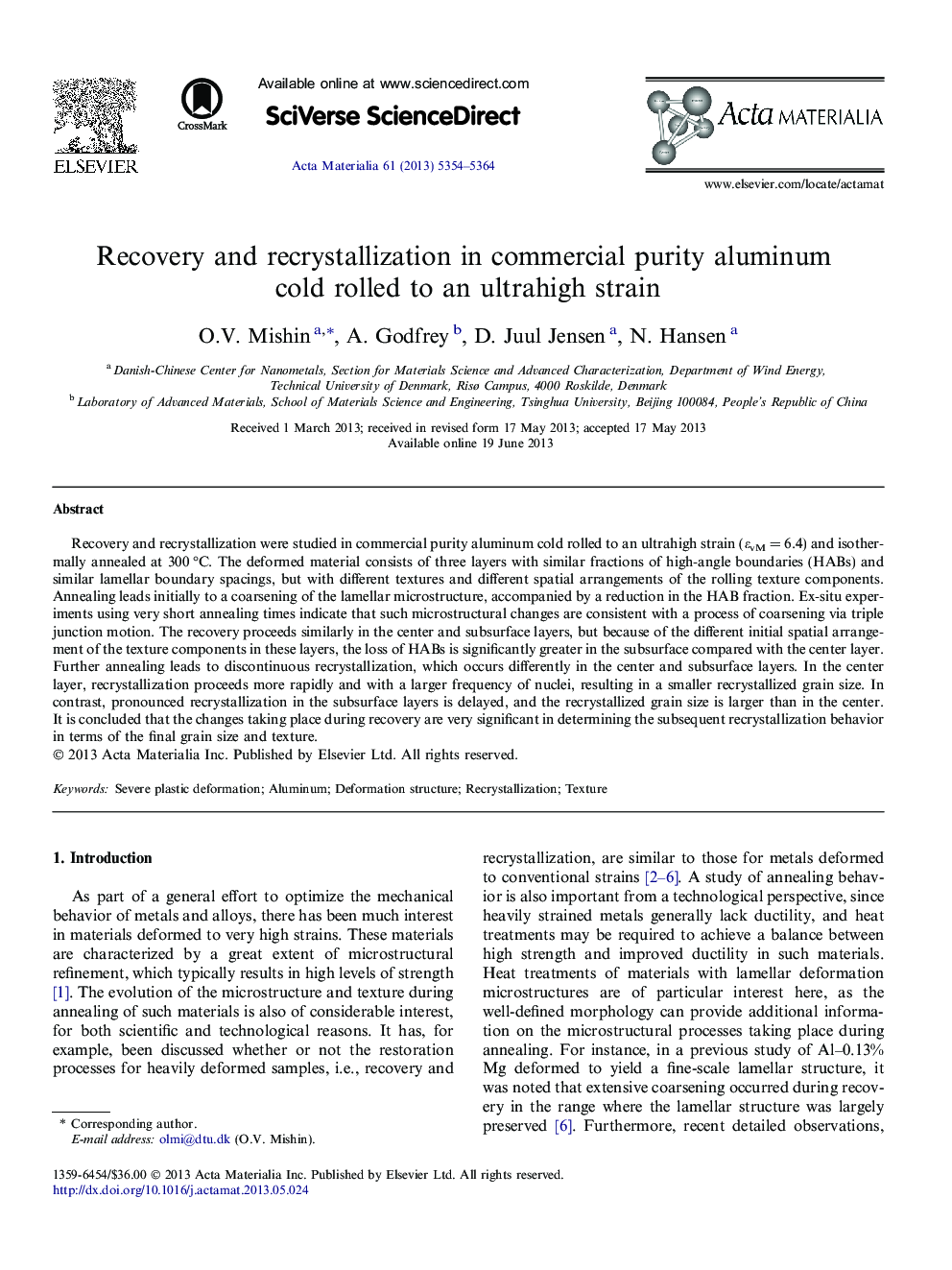| Article ID | Journal | Published Year | Pages | File Type |
|---|---|---|---|---|
| 1445823 | Acta Materialia | 2013 | 11 Pages |
Recovery and recrystallization were studied in commercial purity aluminum cold rolled to an ultrahigh strain (εvM = 6.4) and isothermally annealed at 300 °C. The deformed material consists of three layers with similar fractions of high-angle boundaries (HABs) and similar lamellar boundary spacings, but with different textures and different spatial arrangements of the rolling texture components. Annealing leads initially to a coarsening of the lamellar microstructure, accompanied by a reduction in the HAB fraction. Ex-situ experiments using very short annealing times indicate that such microstructural changes are consistent with a process of coarsening via triple junction motion. The recovery proceeds similarly in the center and subsurface layers, but because of the different initial spatial arrangement of the texture components in these layers, the loss of HABs is significantly greater in the subsurface compared with the center layer. Further annealing leads to discontinuous recrystallization, which occurs differently in the center and subsurface layers. In the center layer, recrystallization proceeds more rapidly and with a larger frequency of nuclei, resulting in a smaller recrystallized grain size. In contrast, pronounced recrystallization in the subsurface layers is delayed, and the recrystallized grain size is larger than in the center. It is concluded that the changes taking place during recovery are very significant in determining the subsequent recrystallization behavior in terms of the final grain size and texture.
